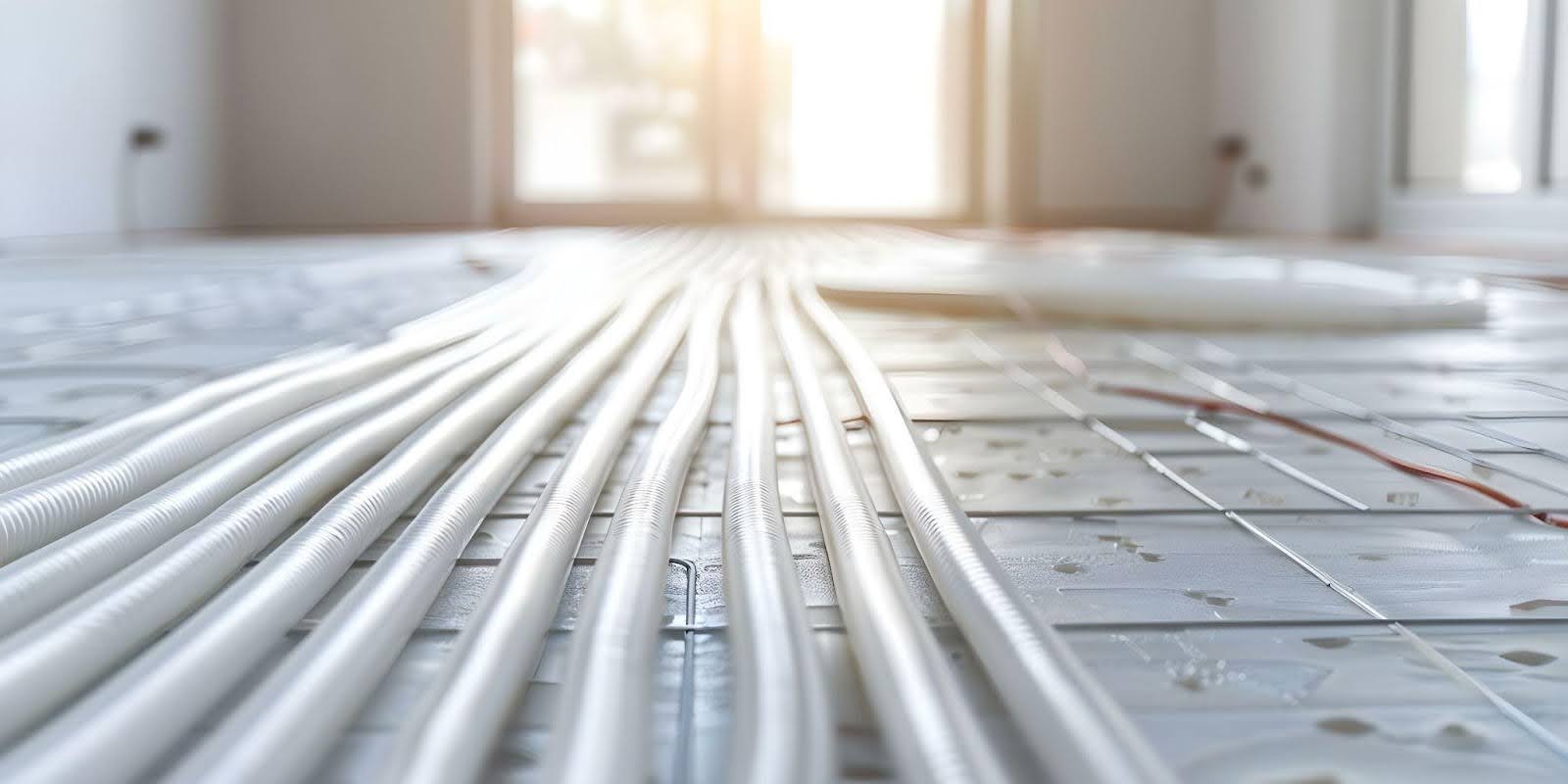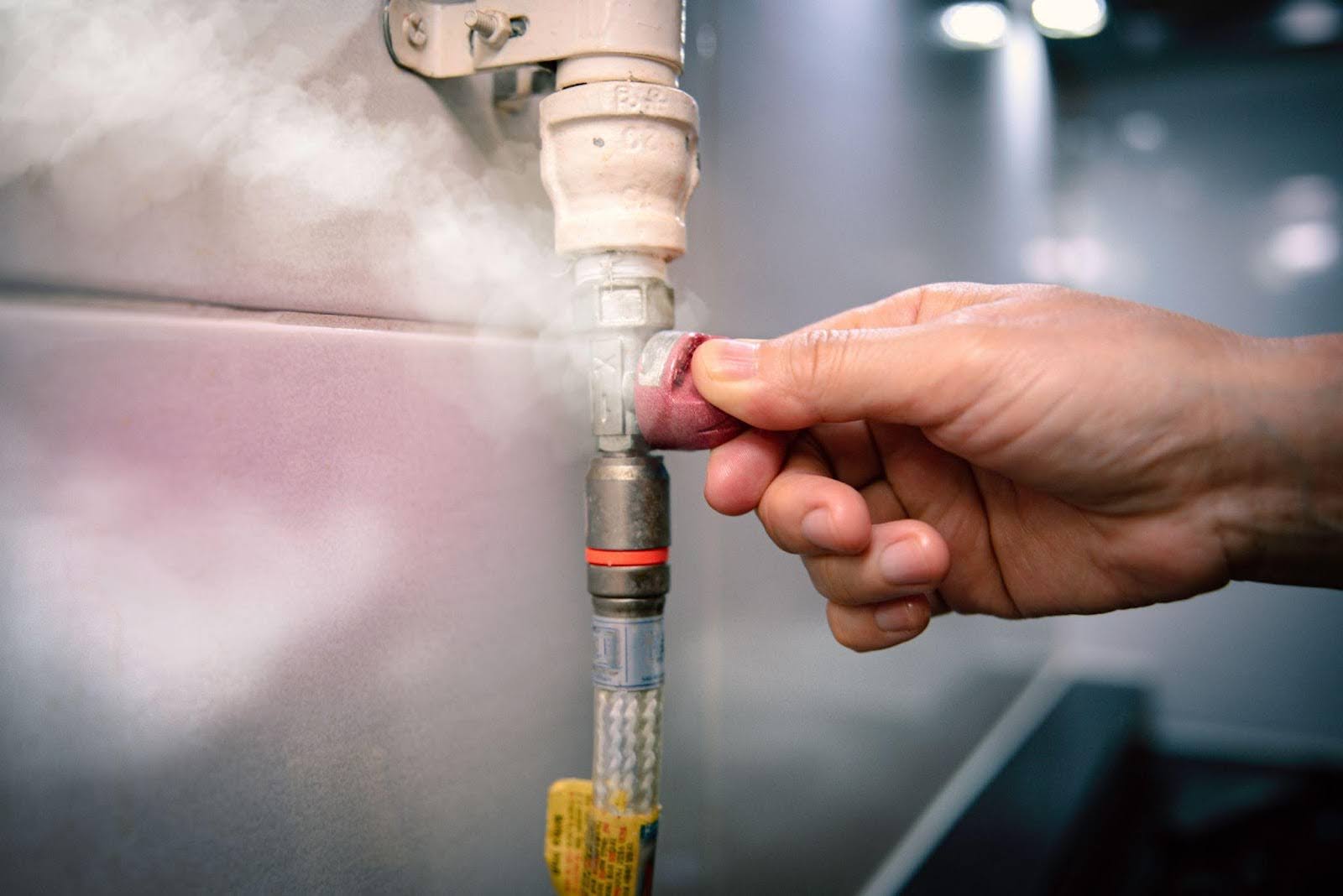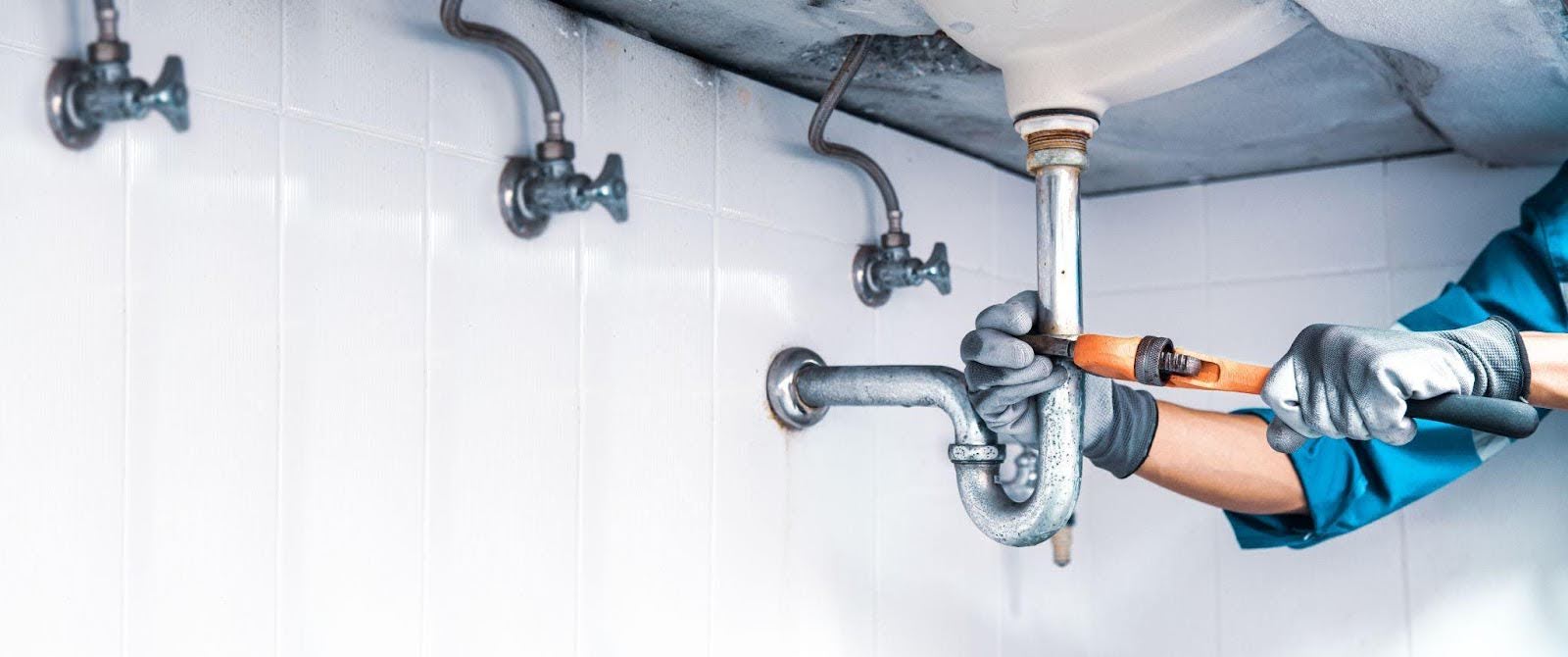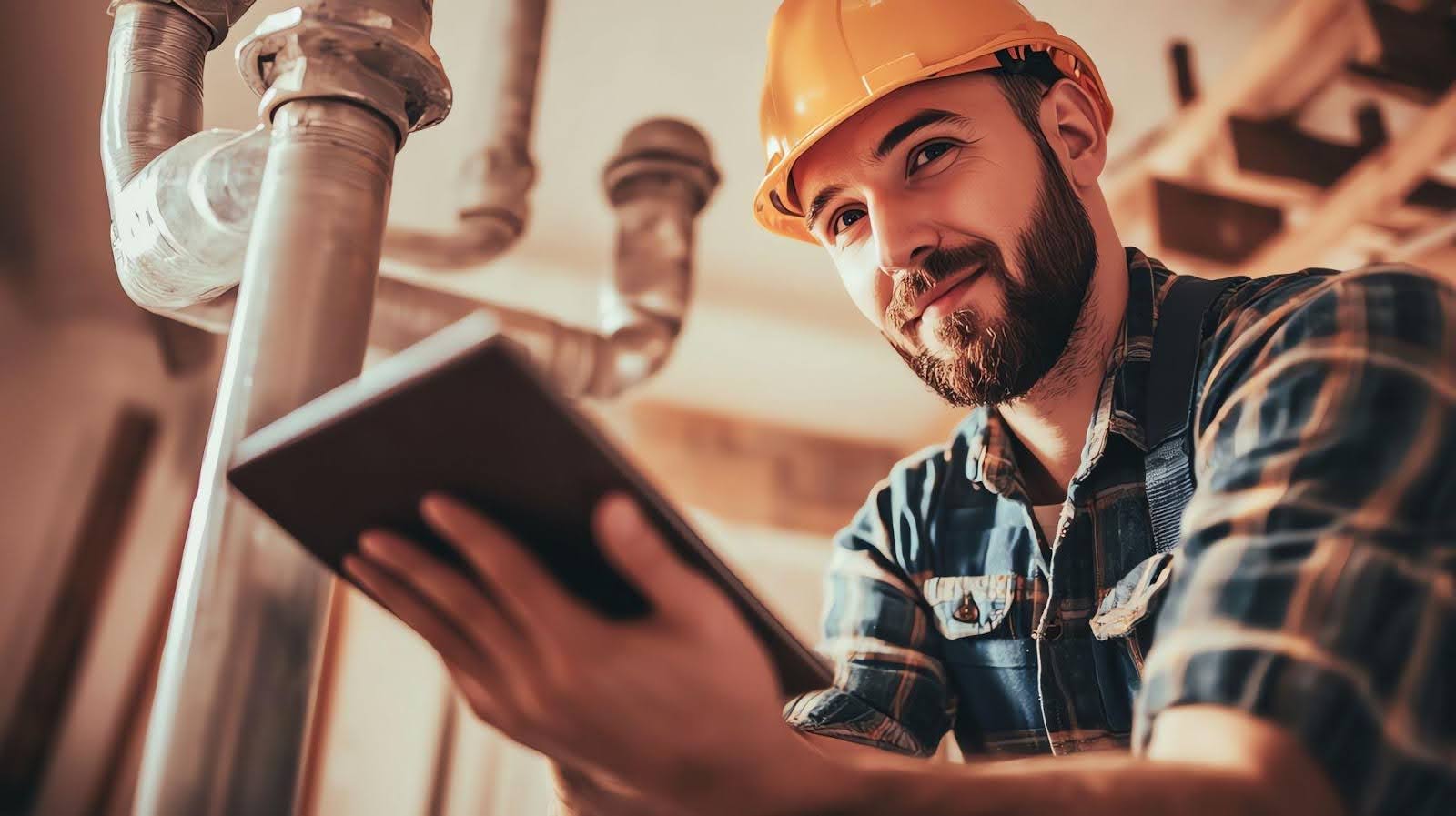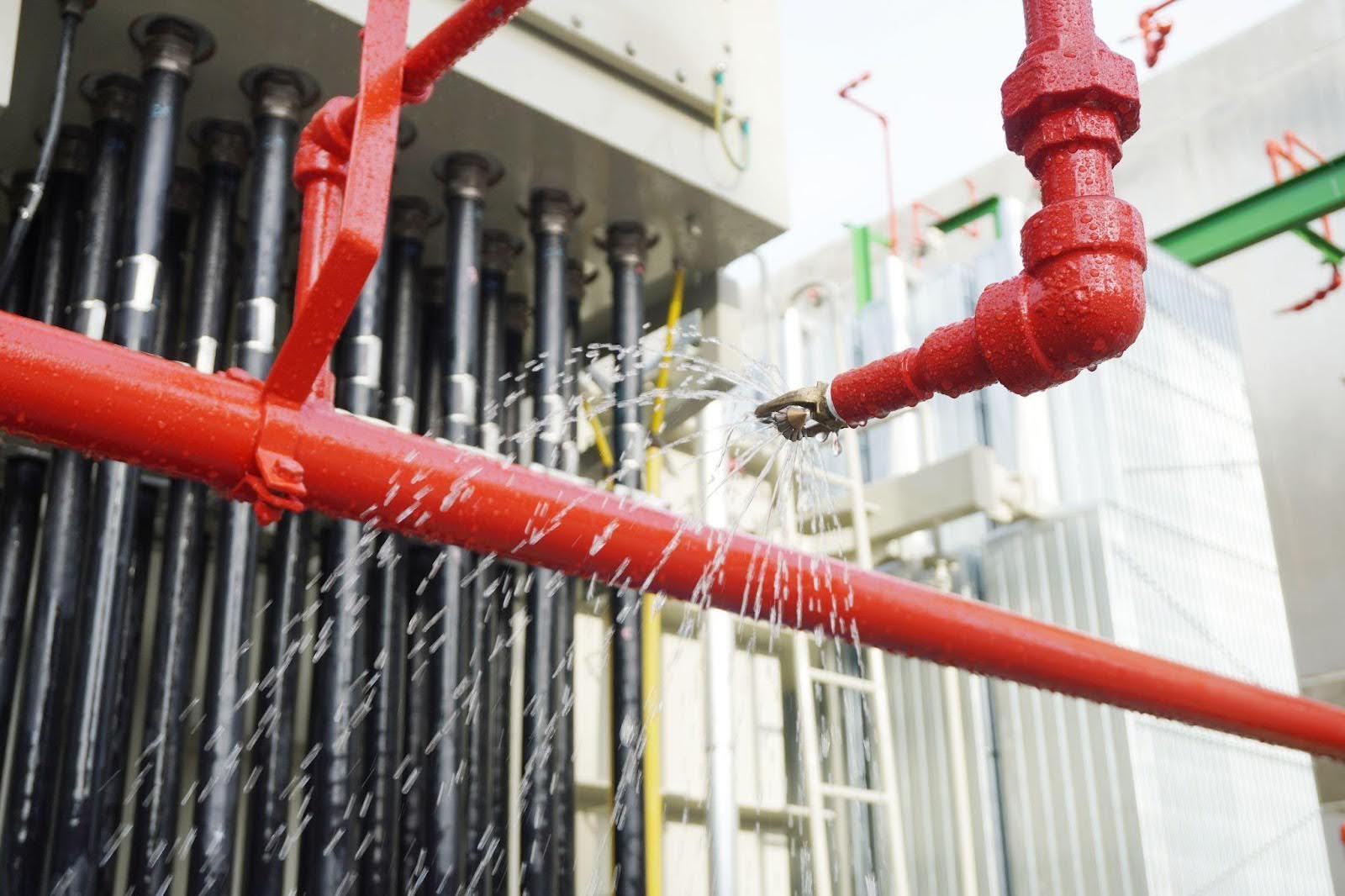Radiant heat systems provide efficient, consistent warmth by directly heating surfaces like floors, walls, or ceilings, eliminating drafts and circulating dust. This makes it ideal for allergy sufferers and those sensitive to fluctuating temperatures.
The main benefits are energy efficiency and comfort, as radiant heat warms people and objects directly, reducing energy waste and lowering costs.
There are two types of radiant heating systems: electric and hydronic. Electric systems use heating cables or mats beneath the floor, which is ideal for smaller spaces, while hydronic systems circulate warm water through pipes, heated by a boiler, and work best for larger areas.
Both systems include components like heat sources, pipes or tubing, and control mechanisms such as thermostats or valves.
Unlike forced-air systems, which cause uneven heating and dust circulation, radiant heating offers quiet, consistent warmth, making it a more efficient and comfortable solution. However, regular maintenance and occasional repairs are essential to keep the system running at its best.
This blog will help you recognize when your radiant heat system needs repairs and how to maintain it for optimal performance.
Common issues with radiant heat systems
Radiant heat systems are reliable, but they encounter problems over time. Common issues include faulty wiring, leaks, air pockets, and thermostat malfunctions. Each of these impact the system’s performance, leading to uneven heating, increased energy costs, or complete failure.
Faulty wiring
Faulty wiring often causes system failures in electric radiant heat systems. Over time, wires wear out or become damaged, resulting in inconsistent heating or complete shutdowns. Signs of this issue include hot spots on the floor or areas that remain cold, which indicate wiring problems.
Leaks
Leaks occur in hydronic systems, particularly in pipes or tubing. These leaks often go unnoticed, but they reduce heat output, cause water damage, or even foster mold growth. A drop in temperature or an increase in your water bill usually signals a leak somewhere in the system.
Air pockets
Air pockets form in hydronic systems when trapped air blocks hot water flow in pipes. These air pockets create cold spots on the floor or walls, making the system less efficient. Purging the air from the system typically resolves this issue and restores proper heating.
Thermostat problems
A malfunctioning thermostat interferes with the operation of your radiant heating system. If the thermostat doesn’t accurately detect temperature or fails to respond correctly, the system may overheat or fail to reach the desired warmth. Inconsistent temperatures often indicate thermostat problems.
Identifying and fixing problems promptly keeps the system running smoothly and maintains a comfortable living environment.
Signs your radiant heat system needs repair
Radiant heat systems are designed to deliver consistent warmth throughout your home, but when issues arise, certain signs will alert you to the problem. Recognizing these warning signs early helps you avoid bigger issues and costly repairs.
Here are the most common signs that indicate your radiant heat system may need attention:
Uneven heating
If certain areas of your floor stay colder than others, you likely have an issue with your system. Uneven heating results from problems with the wiring, tubing, or connections. Addressing this issue quickly helps prevent further damage and ensures consistent comfort throughout your home.
Cold spots
Cold spots on the floor usually indicate trapped air or leaks in the system. These cold areas will prevent heat from circulating properly. Leaks or air pockets disrupt the flow of heat, leading to inefficient performance.
No heat at all
If your system stops working entirely, it may be due to a malfunctioning thermostat, electrical failure, or a broken component. Electric systems could have a tripped breaker, blown fuse, or faulty wiring. Hydronic systems may have issues with a broken pump, blocked pipes, or an empty boiler.
Strange noises
Gurgling, clicking, or popping sounds often signal air trapped in the pipes or other issues. For hydronic systems, air pockets block the flow of hot water, leading to cold spots. If you hear these noises, it’s essential to fix the problem before it worsens.
Higher utility bills
A sudden increase in your energy bills could indicate an inefficient system. Leaks, malfunctioning components, or poor maintenance cause the system to work harder and consume more energy, driving up your costs.
Unresponsive thermostat
A thermostat that doesn’t adjust properly or stops working could be due to faulty wiring, a broken sensor, or a malfunctioning control unit. If your thermostat isn’t communicating with the system, you’ll need to fix or replace it to restore proper temperature control.
Visible damage
Look for visible signs of leaks, cracks, or damage around your radiant heat system. Leaks, in particular, cause water damage to floors and walls. If you see any damage, call a professional to prevent further issues.
Why timely repairs are important
Delaying repairs on your radiant heat system causes issues to worsen and leads to higher costs.
Increased energy costs
When your system malfunctions, it works harder to maintain your home’s temperature, which drives up your energy bills. Cold spots, leaks, and uneven heating indicate inefficiency. By repairing these issues quickly, you prevent excessive energy consumption and keep your costs down.
Potential for more serious damage
Small problems, like leaks or air pockets, quickly escalate into larger, more expensive issues. Water damage, electrical failures, or system breakdowns are all risks of ignoring minor issues. Early repairs prevent these costly consequences.
Reduced comfort
A malfunctioning radiant heat system makes your home less comfortable. Uneven heating, cold spots, and strange noises disrupt your environment. Addressing repairs promptly ensures you maintain the consistent warmth your system is meant to provide.
Early detection and prevention
Identifying issues early helps you avoid major repair bills. Quick action prevents small problems from becoming bigger and extends the life of your radiant heat system, maximizing your investment.
When to call a professional
Knowing when to call a professional technician for your radiant heat system ensures you maintain comfort and safety in your home. Here’s when you should seek expert help:
Persistent issues
If problems like uneven heating, cold spots, or strange noises persist despite your troubleshooting, contact a professional. These ongoing issues likely indicate deeper problems that require specialized expertise to resolve.
Complex problems
Issues like leaks within the system or electrical malfunctions are too complex to handle yourself. Attempting repairs without the proper knowledge causes further damage. A professional will quickly pinpoint the root cause and provide a lasting fix.
Safety concerns
Radiant heat systems involve electricity, water, and pipes, which pose safety risks if mishandled. If you notice electrical failures or water leaks, contact a licensed technician immediately. They will ensure repairs meet safety standards and regulations.
Benefits of hiring a licensed technician
A licensed professional brings expertise, experience, and knowledge of how radiant heating systems operate. They accurately diagnose and repair issues, prevent costly mistakes, and optimize your system’s efficiency. Professional repairs often come with warranties, offering you peace of mind.
How to maintain your radiant heat system
Maintaining your radiant heat system ensures it runs efficiently and lasts longer. Follow these essential tips to prevent common problems and keep your system performing at its best.
Regular system checks
Inspect your system regularly for signs of wear, leaks, or irregularities. Check thermostat settings and verify the system is operating as expected. Identifying small issues early helps prevent larger, costly repairs down the line.
Bleeding the system
If you notice uneven heating or cold spots, trapped air may be causing the issue. Bleeding the system releases the air, ensuring even heat distribution. Follow the manufacturer’s instructions to safely bleed the system and maintain smooth operation.
Maintaining proper water levels
For hydronic radiant heating systems, ensure the water levels are appropriate. Low water levels affect heating efficiency and damage the pump. Regularly monitor the pressure gauge and top off water as needed for optimal performance.
Periodic professional inspections
While routine maintenance is crucial, schedule a professional inspection at least once a year. A licensed technician will assess the system, check for potential problems, and make necessary adjustments to keep it running safely and efficiently.

Trust Salisbury Plumbing with your radiant heating system
If your radiant heat system is showing signs of trouble or you simply need an expert inspection, Salisbury Plumbing is here to help. Our skilled team offers dependable repairs, routine maintenance, and expert guidance to ensure your system works seamlessly.Contact Salisbury Plumbing today for all your radiant heat needs and experience exceptional service you can trust.
slot terpercaya toto slot toto slot toto slot toto slot slot gacor toto slot bento4d toto slot slot thailand situs slot gacor toto togel toto slot slot online situs toto situs togel bento4d login toto slot slot online situs gacor bento4d togel bento4d login toto slot toto slot toto togel situs toto data macau bento4d slot gacor hari ini slot gacor

